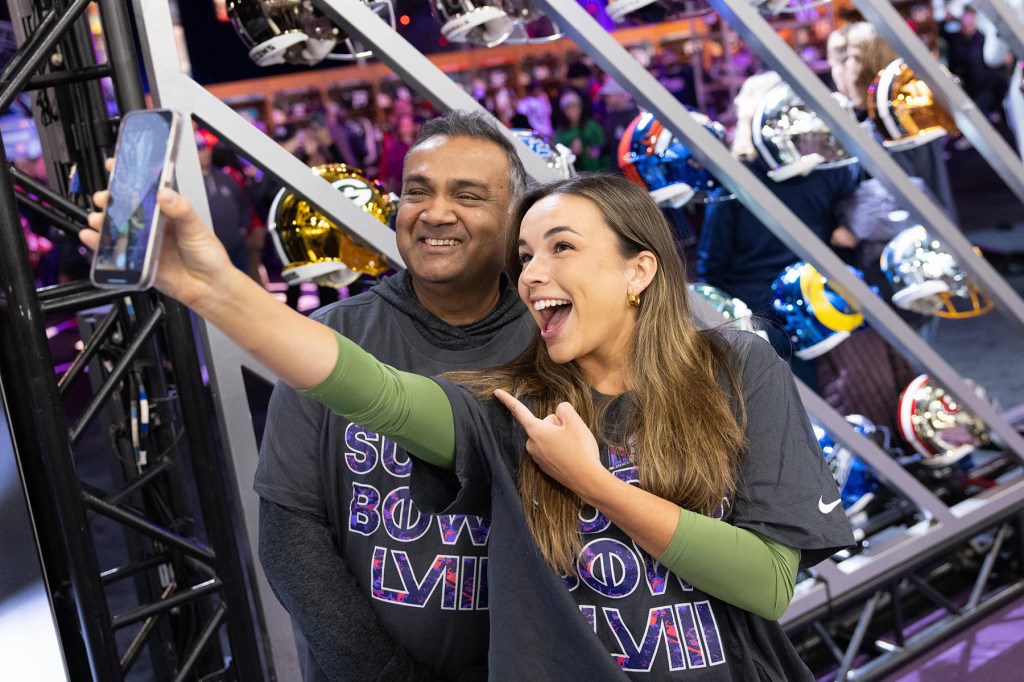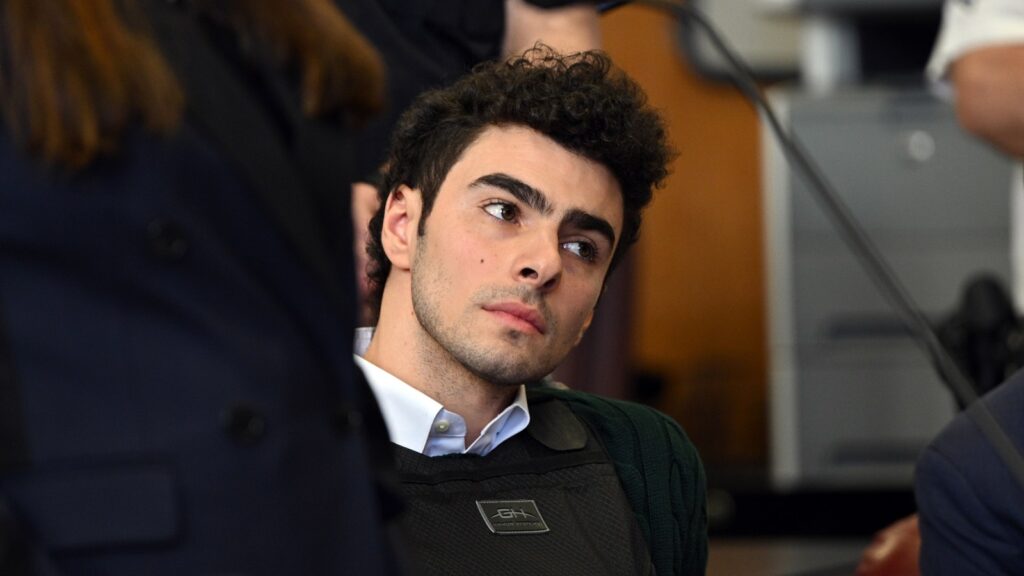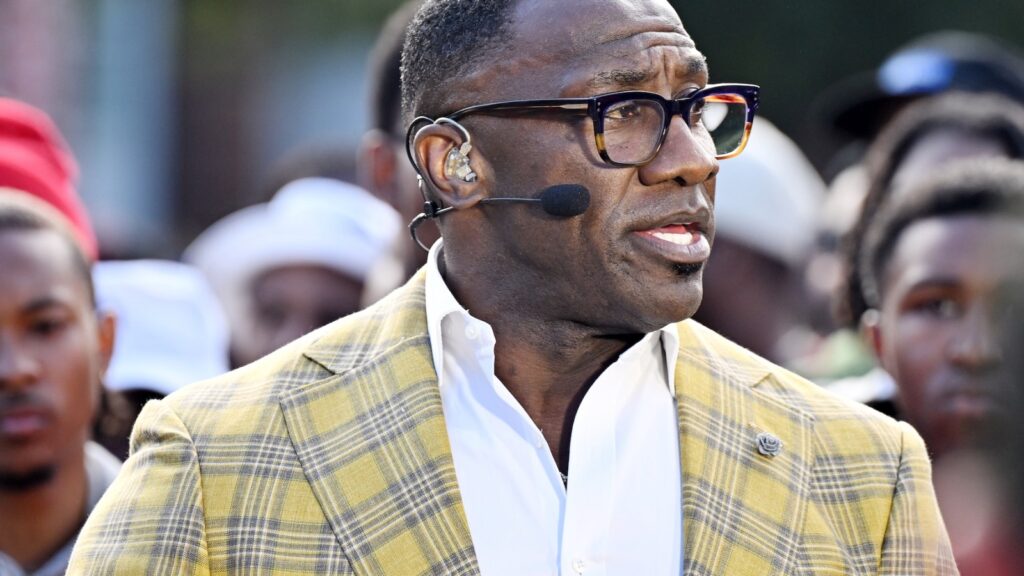The Super Bowl’s Other Big Winners… Were the Creators?
It’s 24 hours before the biggest sporting event of the year and amid the fevered cacophony of rabid lines of fans, a looming showdown, and the city of Las Vegas, one small teenage girl only has eyes for an unassuming young woman in a Super Bowl LVIII T-shirt.
“Wait!” she says, as a family member tugs her through a crowded section of Las Vegas’ Mandalay Bay Convention Center. “Wait! That’s Pierson!”
She’s referring to Pierson Wodzynski, an American YouTuber and content creator whose easy smile, freckled face, and down-to-earth demeanor have netted her 5 million subscribers on YouTube, 16.4 million followers on TikTok, and an adoring fanbase. But it’s the person the young girl doesn’t recognize that explains why a lifestyle content creator known for YouTube challenges like “GETTING STARBUCKS EVERY HOUR FOR 24 HOURS” is even in town for the Super Bowl in the first place: Neal Mohan, YouTube product-chief-turned-CEO. He’s responsible for a multibillion dollar company that replaced Netflix this year as the top streaming service in the world, and instead of doing literally anything else at the moment, he’s making a video with Wodzynski.
The 2024 matchup between the Kansas City Chiefs and the San Francisco 49ers marks the first year that the Super Bowl is being held in Las Vegas. But landing in the arid desert landscape, you would think the city has been preparing its entire existence for this exact moment. Even before my plane takes off from JFK airport in New York, signs are everywhere — I’m greeted by no less than 10 pieces of apparel referencing a potential appearance at the game from mega pop star Taylor Swift. (The 2023-2024 NFL season was dominated by the pop star’s public relationship with Chief’s tight end Travis Kelce; on the plane, a flight attendant high fives a blonde woman wearing a “Go, Taylor’s boyfriend” sweatshirt as she takes her seat.) And that’s nothing compared to the Strip. There are 49ers fans draped out of the window of the Hard Rock Cafe, bedazzled jerseys causing traffic jams on broken escalators, and sometimes, fans simply yelling their team’s names in the middle of packed shopping malls or desolate TGI Fridays. On the sides of buildings, Kansas City Chiefs quarterback Patrick Mahomes’ face and jersey compete with a poster of magician David Blaine, which also includes a UFO and a frighteningly detailed T-Rex. It’s unclear whether the ad is suggesting Blaine will be eaten by the dinosaur or joined on stage, but ticket hawkers on the strip are still convincing plenty of people to stop simply by yelling Blaine’s name. Welcome to the Vegas Super Bowl, baby.
Neal Mohan and Pierson Wodzynski
Eli Tawil/Youtube
It’s a destination known for making people drink so much they’re considered lucky if they only leave financially destitute, poorly tattooed, or wedded to a stranger. But this weekend, it’s also the staging ground for one the most ambitious collaborations between two massive media powers: the NFL and YouTube. In 2023, YouTube became the first streaming service to get Sunday Ticket, the NFL’s package of football games that don’t appear on basic cable. For YouTube, it’s a gambit that’s given them 3 million new YouTube TV subscribers. For the NFL, it’s a way to use content creators to reach a new generation. But at least on the ground, what’s evident is that the NFL still has to translate that energy into fans coming to the big game. There are creators crawling around the Strip, lifestyle and comedy and sports influencers around so many corners that it feels like they could eclipse the A-list stars coming to town for the game — what’s missing are the people who would appreciate their presence in the first place. Online, fans gush over Wodzynski’s presence in the Sunday Ticket Super Bowl commercial. At the NFL fan experience, 13-year-old girls — already few and far between in the space — can’t even convince their families to stop for photos with the creator. “Who?” one mom asks. The men in their group, decked out in jerseys and beads, don’t even look back. The NFL already knows they have fans for life. They just want them a bit earlier in that process.
In his first interview of the year, Mohan rattles off advertising statistics, figures, and corporate buzzwords that prove the NFL and YouTube are currently in a mutually beneficial relationship. He came to this realization at an NFL owners event, when he spoke on stage with popular engineering and science YouTuber Mark Rober. Once they were done, Rober was swarmed, not by team owners, but by the kids and grandchildren they had brought with them. “It was so amazing to see how eye-opening that was for these owners, especially with kids two generations removed,” Mohan tells Rolling Stone. “We’re in the business of building careers, not just building the trend of the week.”
For the NFL, football alone is still an older man’s game. The Wall Street Journal reports that the average league viewer is 55. In comparison, the average person watching YouTube is 25 to 35, a metric that can skew even lower when kids too young for their own accounts are included. This age distinction feels particularly stark on the streets of Vegas, which comes across like a dad convention on steroids. But outside of Vegas — where ticket prices averaged $12,000 days before the big game — the combination of the biggest game and the biggest names online seems to be working.
A video of TikTok food personality Keith Lee intercepting a pass from Michael Vick during a celebrity pickup game gets 4.6 million views in 24 hours on TikTok. And as Haley Kalil, another YouTuber and red-carpet host, walks around the Mandalay Bay convention center with her father, more teens begin to notice her. And their phones are all out.
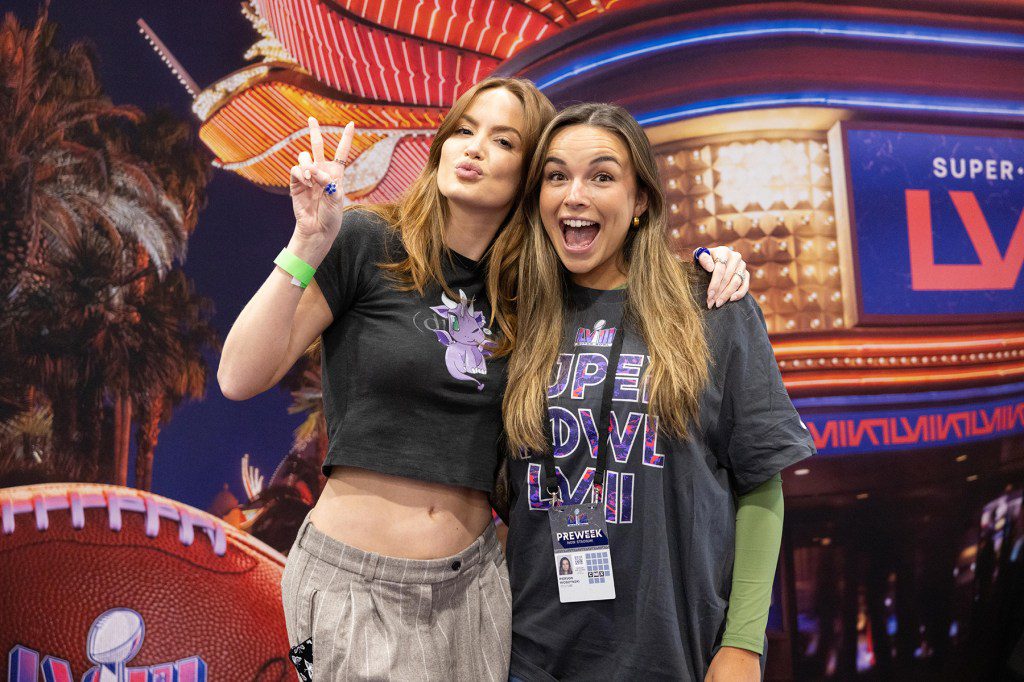
Haley Kalil and Pierson Wodzynski
Eli Tawil/Youtube
THE FIRST TIME Donald De La Haye Jr.’s family realized his YouTube videos might be more than a hobby was when he attended his nephew’s school play. After the curtain, all the students swarmed their parents, family, and friends, accepting flowers and congratulations. All, that is, except one boy, who caught sight of De La Haye in the crowd. “He saw me and just froze,” De La Haye tells Rolling Stone. “And next thing you know, a big tear just falls out his eyes. He starts bawling.”
Don’t know who De La Haye is? The average 16-year-old might recognize him from his screen name, Deestroying. A sports-themed content creator, De Le Haye has 5.7 million subscribers on YouTube alone, where he posts videos about football showdowns and college facilities, full of features with starry-eyed recruits and 14-year-old savants. But he isn’t just an influencer with a following. He’s a creator who represents how difficult a battle it’s been for sports organizations and content creators to mesh. In 2015, De La Haye attended the University of Central Florida as a kicker on a football scholarship. In his free time, he made YouTube videos about being a student athlete, training, and his regimen. But when his follower count grew and he was finally able to monetize the videos on YouTube, the National Collegiate Athletics Association (NCAA) — which prohibited student-athletes at the time from making money off of their name, image, or likenesses — gave him a choice: football or YouTube.
“I felt a little betrayed at the time, because I felt like if I wasn’t an athlete, if I was an engineering student or something, and I [created] a business that was starting to make some money it would be applauded,” says De La Haye.
Even though he had been dreaming of the NFL since he was 14, De La Haye knew he had captured “lightning in a bottle” with his channel. So he chose YouTube. And by his account, it was the right call. As a student-athlete, he had to figure out how to save as much of his monthly stipends as possible. Now, NFL Commissioner Roger Goodell is a friend and has joined him on stage and in content multiple times.
“Roger, that’s my dog. We’ve worked [together] a few times, ” De La Hayes says with a blinding white grin. “I call him uncle Roger.”
For creators, a constant stream of content has long been a way to build audiences. But cash, and lots of it, remains king. On YouTube — a site which has the largest direct revenue sharing program with creators of all the major social media platforms — videos have a chance to give content creators a much larger share of ad money than on TikTok, Snapchat or Instagram. And with the NFL partnership, a select few creators aren’t just getting free tickets or sponsorship opportunities: They’re getting access to the NFL — an institution that has been notorious for its inaccessibility. They get to bring their phones to places a select few press can see. They get eyes. They get views. And they get rich.
After finishing her video with Mohan, Wodzynski makes her way to a green room, where creators by the dozen relax away from the eyes of the crowds. Her energy, which was bubbly and effervescent even as dozens of teens and tweens tried to surreptitiously trail her across the convention center, only increases when she gets a chance to talk about the Super Bowl. If the NFL wants kids’ attention, they’ve got it in spades in this room. “I can’t believe I missed him!” a red-haired worker stuck behind a counter bemoaned once she learned streamer and YouTuber Duke Dennis showed up right after her shift. “I would’ve fell to my knees.” It’s fanfare met with indifference — and a combination of recognition and utter befuddlement that Wodzynski knows well. The YouTuber was living with her father when her career began to draw hundreds of thousands of views on the site. After joining the collab group AMP house, her following, bolstered by constant creator cameos, grew. But for the soon-to-be 25-year-old, constantly being approached by young children desperate to meet their favorite star does come with a weightier responsibility.
“My personality is very family friendly in general. Like, I’m not the type to go around doing heinous stuff,” Wodzynski tells Rolling Stone. “So it translates into my content naturally, which is really great. It’s not necessarily that I’m making content for kids. But I’m cognizant of [who’s watching.]”
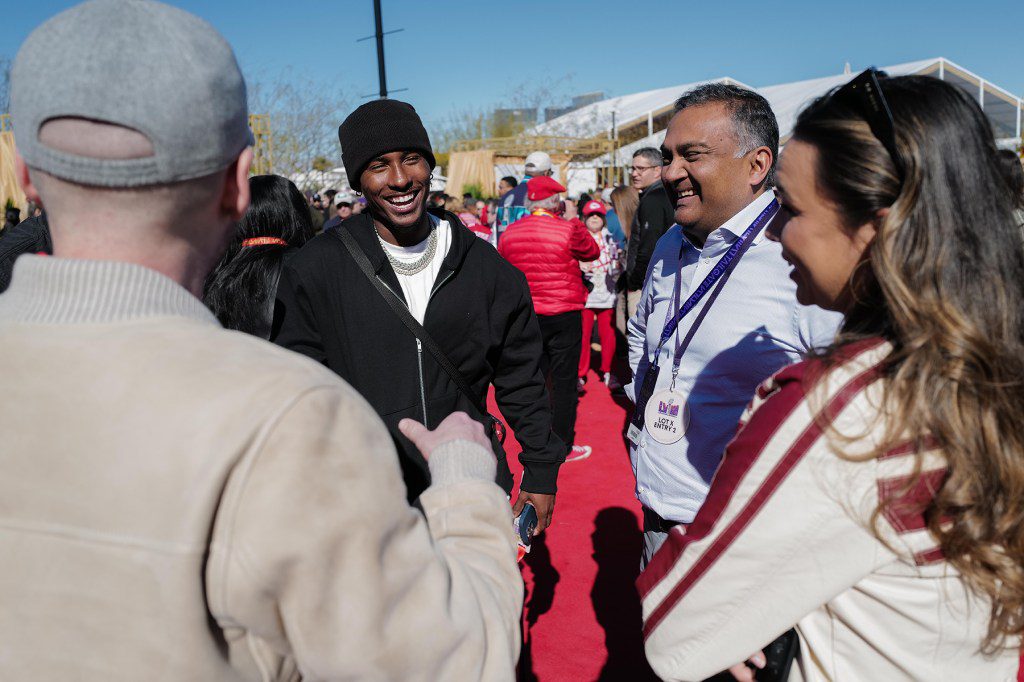
Sean Evans, Deestroying, Neal Mohan and Pierson Wodzynski
Eli Tawil/Youtube
ON SATURDAY NIGHT, a crowd gathers outside the Michelob Ultra party at Topgolf, eager to see a celebrity shootout between Martha Stewart and Shaquille O’Neal. The lines are cordoned off by dividers, but an outdoor space that first appears orderly turns into a consistent bottleneck when young women realize that the red-carpet host is Kalil. “I love her!” one shouts, whipping out her phone. Another simply shrieks. But Kalil isn’t phased by the attention. Earlier in the day, while a three person hair and makeup team flits around her, Kalil tells Rolling Stone she knows her fanbase well. “I create for the girls and the gays,” she says, her leg vibrating while a brush gets increasingly close to her cornea. While it sounds like a simple strategy, she’s fresh off a run of red carpets that have proven just how powerful the influencer perspective is. Kalil attended, interviewed, and made content at the Streamys, the Grammys, and the Golden Globes. “We got over 300 million views in the first four days,” she says. “It was a huge success. We have the People’s Choice Awards next weekend and then SAG Awards and then hopefully, speaking it into existence, the Oscars.”
Some are more able to brush off this newfound fame than others. Sean Evans, the host of First We Feast’s digital talk show Hot Ones, is known for grilling celebrities while they try and fail to eat increasingly spicy chicken wings. Maybe that’s why, even with a YouTube series that gets millions of views and dozens of aggregated articles, think-pieces, and fan blogs every episode, he still doesn’t consider himself famous.
“I’ve never called myself a celebrity. I don’t really think of myself as one. I’m a child of the Nineties. So to me, a celebrity is a big movie star or a singer who sells out stadiums. That’s kind of the thought in my head. But it has been redefined in such an interesting way.”
For Evans, that change has meant having to acknowledge that even though he just considers himself a normal guy from Chicago, life is different now. For one thing, normal guys from Chicago don’t get chased by crowds leaving a White Sox game. Once, at the University of Illinois, Evans and his brother had to run for blocks to dodge a wild pack of fans.
“When I started doing the show, I was working in a cubicle and making 60 grand a year,” Evans says. “Some of those things are like, kind of crazy.”
THERE IS NO FEELING quite like the Big Game. Every hallway feels like a crushing mass in motion, beers and margaritas and the smell of cheap tequila mixed with hot dogs and french fries. There are families, babies with headphones bigger than their heads, and so many Swift-themed clothes. “I’m in my winning era,” one dad proudly displays on his sweatshirt. Another family let out feral screams when the jumbotron camera pans to Swift in a private suite. The energy pulsates so frenetically that it feels like the bass and chants and noise are coming directly from my chest. But the most telling aspect of the whole game was one few people could see in its entirety. Across the stadium, while cameras zoom in to catch celebs like Leonardo Dicaprio, Justin Bieber, and Ariana Grande in their seats, creators filter through the crowd, bringing with them a buzzing focus. Teens with outstretched phones sprint around the backs of the stadium, yelling about videos they got of TikTok star Alix Earle. In the stands, it takes YouTube star Casey Niestat minutes to get from his seats out to the concourse, mostly because every time he walks around, no less than five teen boys shove their phones out for selfies. And I still haven’t even figured out how MrBeast managed to snag a photo with Mohan without starting a genuinely dangerous stampede. In fact, the attention even smaller influencers are getting seems so ridiculous that the only thing I’m shocked about is that they’re not getting their own moments on the Jumbotron.
There’s a disconnect between how easily creators seem to do their jobs and the massive influence they pull in the process — one only made starker by the fact that a decades-old institution like the NFL and a billion-dollar corporation like YouTube are relying on a bunch of 27-year-olds who make their best friends point cameras at them for revenue. In fact, the NFL partnership with YouTube seems to be taking a literal page from creators’ book: In 2019, creator ecosystems were buoyed by collab houses, physical locations where influencers and soon to be video stars worked together to make content with the express purpose of sharing their audiences — and hopefully success. Now, it’s the companies doing the same thing. And combined with the backdrop of Vegas, this feels like the only place where it makes sense. The town celebrates its excess, the glimmer and shine that makes carpeted, smoky casinos feel like temples for greatness. It excels at selling people things. Sometimes, that’s a lifestyle. Sometimes, it’s the promise that a single football game is worth thousands of dollars. And sometimes, it’s that the future of entertainment might be walking among the crowds at this very moment. And at least for those who have bet on creators, that’s worth a lot.
“You won’t catch me slipping,” Evans says, laughing. “If you see a chicken wing in my hands this weekend, there’s a check attached.”


